
Piercing the veil
A new exhibition at Buxton Contemporary finds a rich complexity in the shadowy terrain between life and death.
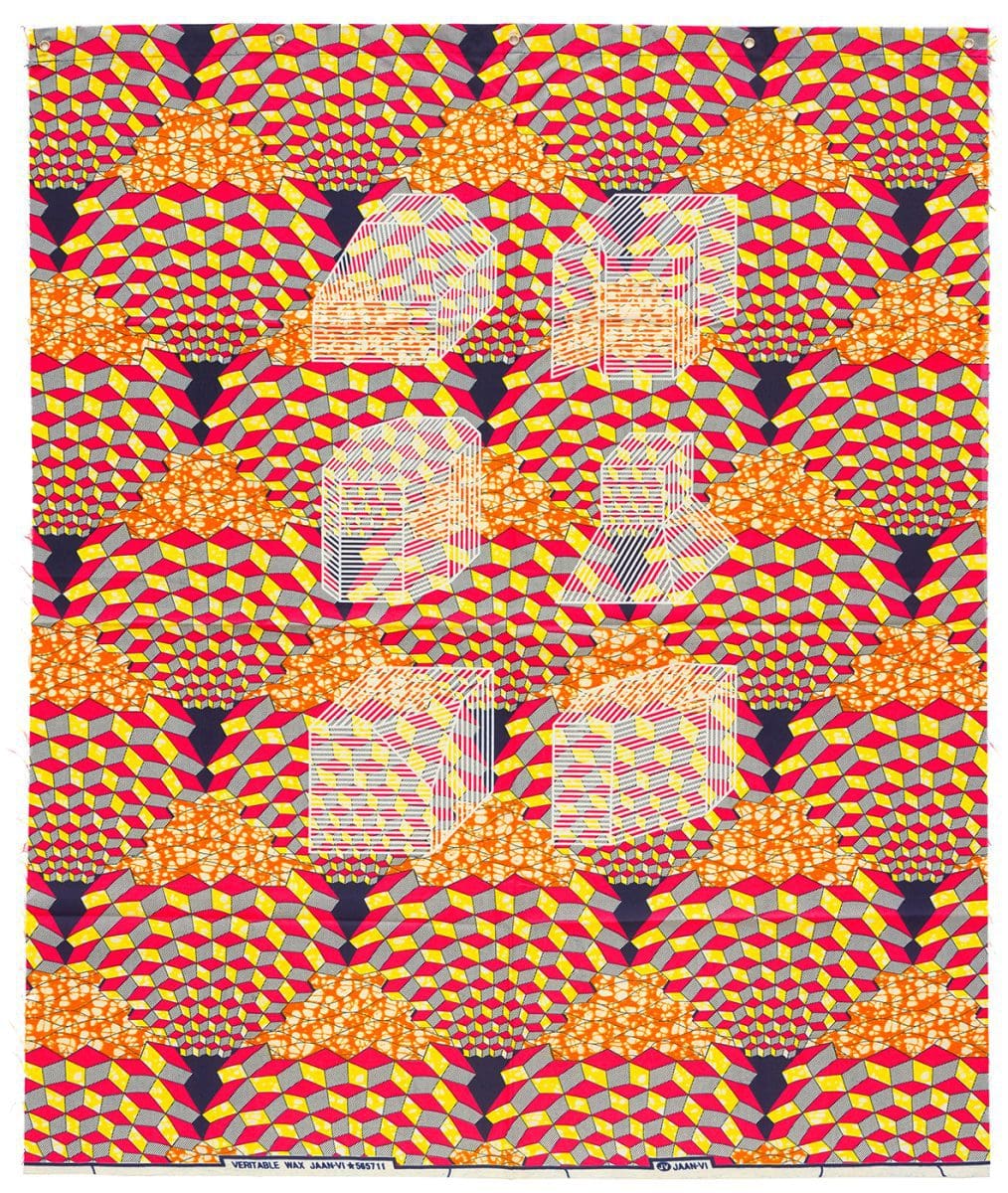
Jonathan Monk, Dessins Isométriques (Afrique Cubique), B2 2017, screenprint on wax print fabric, metal grommets, 110 x 92 cm Art Gallery of New South Wales Mervyn Horton Bequest Fund 2017 © Jonathan Monk.
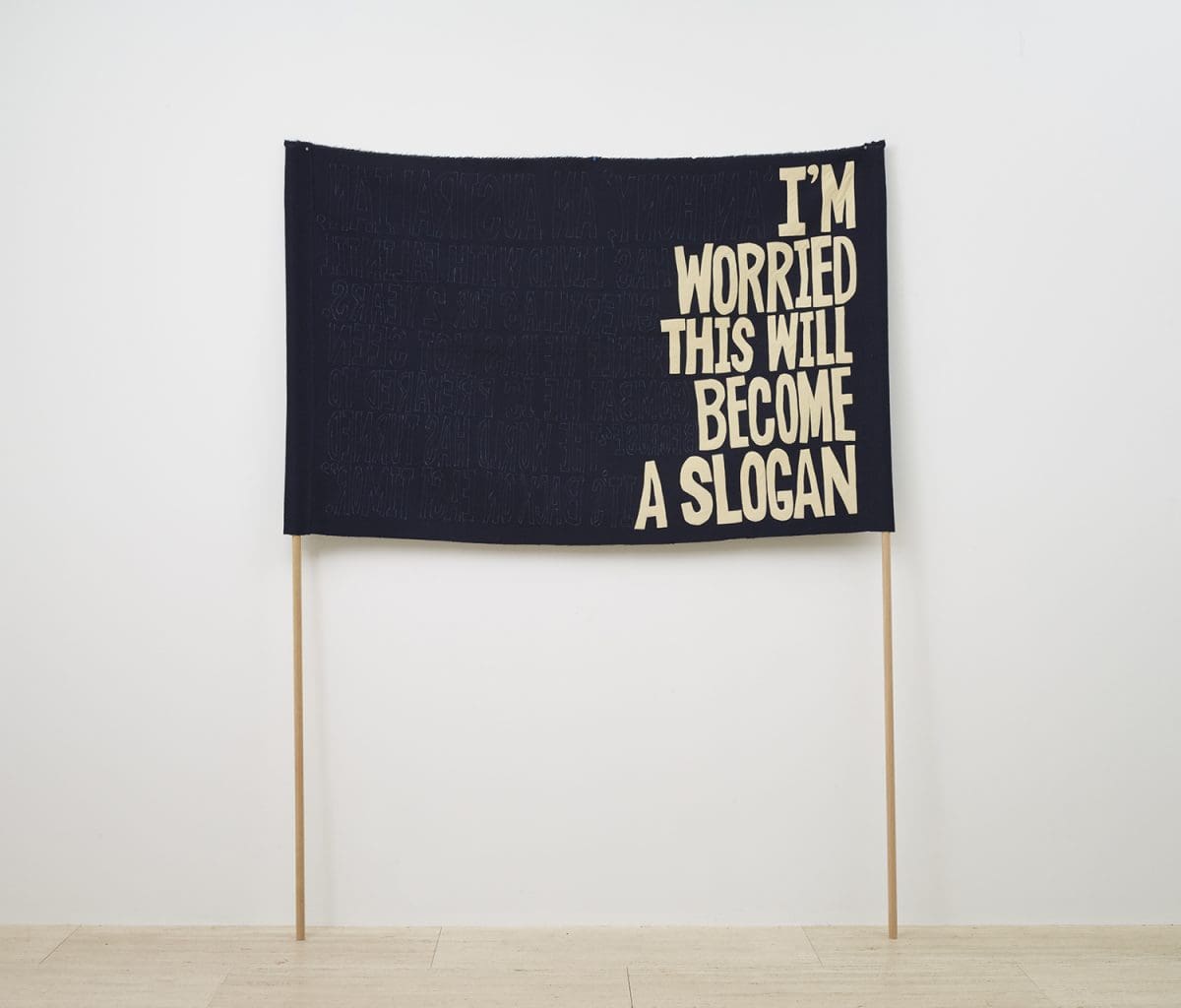
Raquel Ormella, I’m worried this will become a slogan (Anthony), 1999-2009, double-sided banner, sewn wool and felt, 128 x 202 cm Art Gallery of New South Wales Contemporary Collection Benefactors 2015 © Raquel Ormella.

Jonathan Monk, Dessins Isométriques (Afrique Cubique) A3 2017, screenprint on wax print fabric, metal grommets, 115 x 104 cm Art Gallery of New South Wales Mervyn Horton Bequest Fund 2017 © Jonathan Monk.
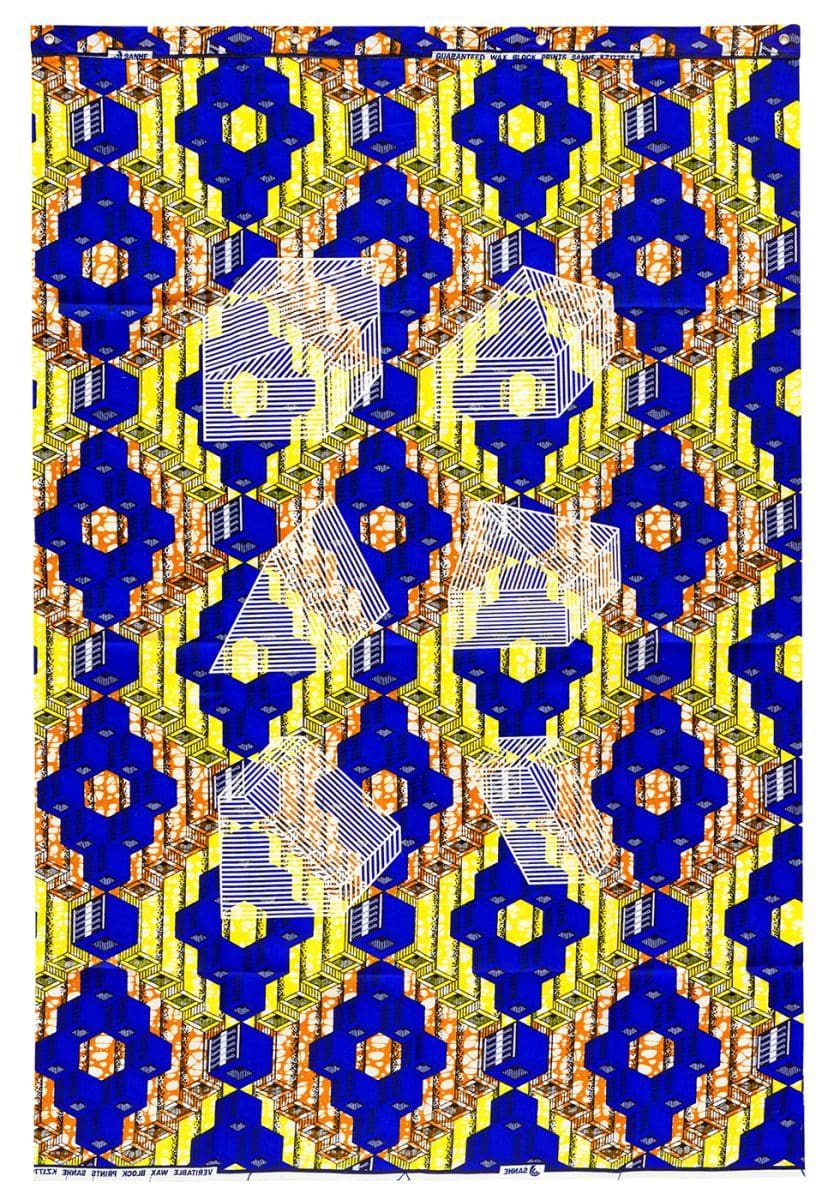
Jonathan Monk, Dessins Isométriques (Afrique Cubique), C5 2017, screenprint on wax print fabric, metal grommets, 114 x 75 cm Art Gallery of New South Wales Mervyn Horton Bequest Fund 2017 © Jonathan Monk.
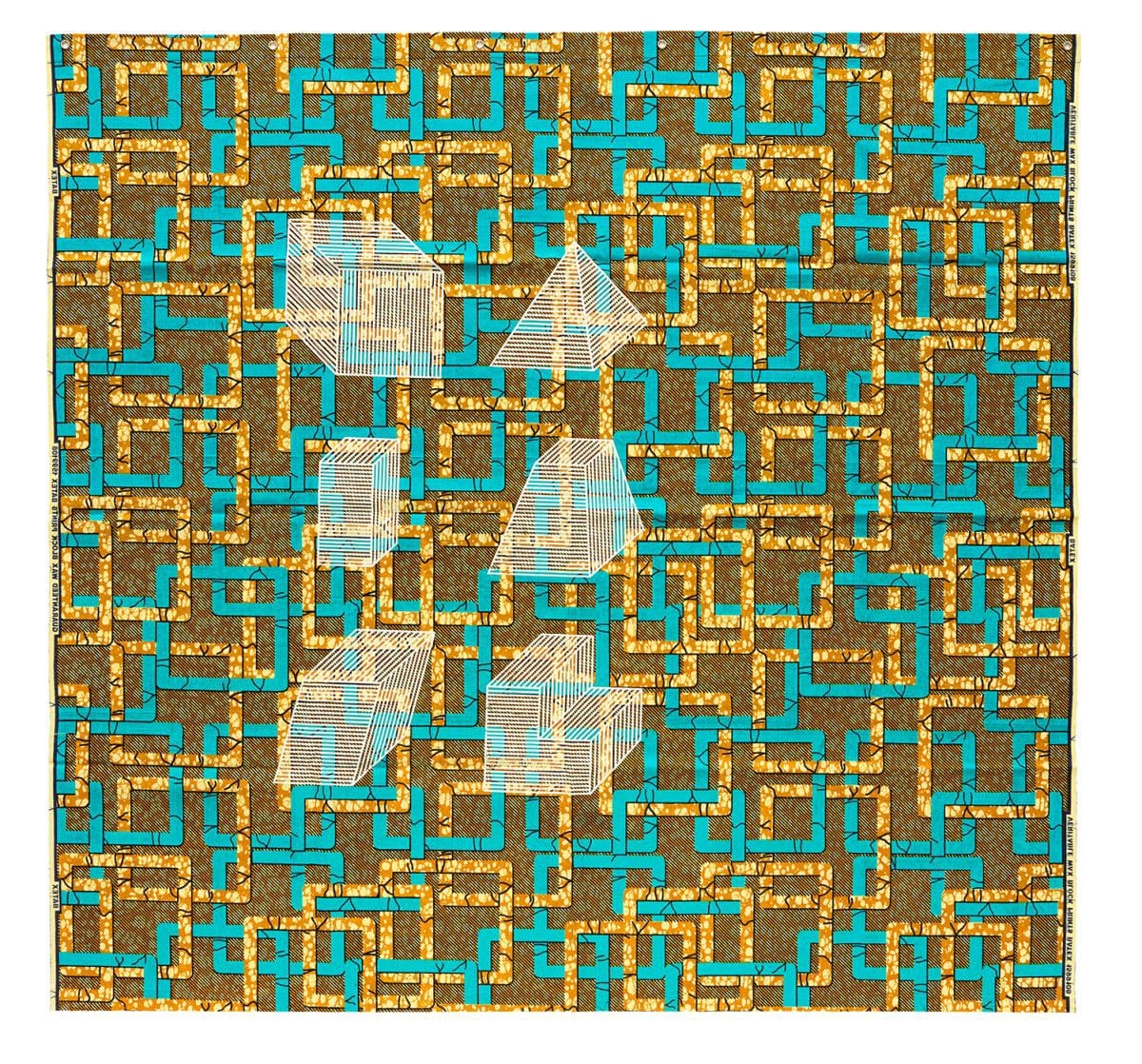
Jonathan Monk, Dessins Isométriques (Afrique Cubique), D5 2017, screenprint on wax print fabric, metal grommets, 110 x 117 cm Art Gallery of New South Wales Mervyn Horton Bequest Fund 2017 © Jonathan Monk.
Textiles are art’s stealth medium: canvas is painting’s base, cotton rags make quality art paper, and videos in galleries are often projected onto woven screens. It’s also the case in broader culture. With its ancient and vital history, textiles have provided us with familiar metaphors we barely notice as we speak of every fibre of our being, interweaving something, or following a thread on the internet.
The works by both Australian and international artists in the group exhibition Exploded Textiles render this familiarity new again through innovative conceptual and craft processes. The show reveals textiles considered through other media; textiles as objects with particular, accumulated meanings; and textiles as simultaneously image and object.
The latter idea is evident in the work of London-based Palestinian artist Mona Hatoum, whose work often considers displacement and diasporic identity. As curator Jackie Dunn says, in Bukhara (red), 2007, “She’s referring to the kind of Persian carpets that would have been in her own Middle Eastern-origin home in the UK. She created a world map projection by removing the threads from the carpet. There is a strange slip between whether you read it as an image on the wall or as an object on the floor.”
Another image-object in the show is Narelle Jubelin’s The Unforeseen, 1989. “She uses petit point embroidery partly to focus on female craft skills, to reflect on neglected feminine craft and the diminishment of textiles in modern Western art,” says Dunn. “But she also makes the point that embroidery operates as image and object at the same time.”
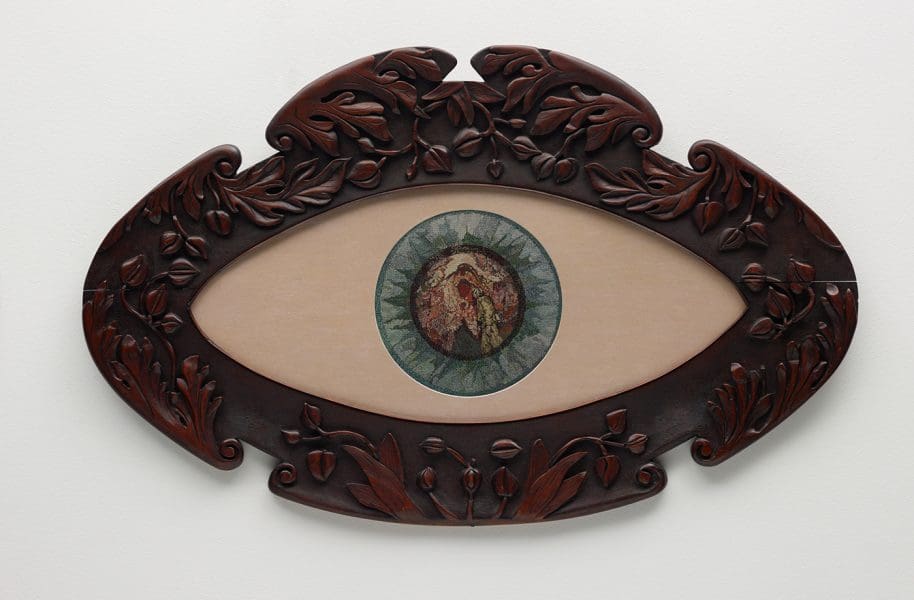
The curator sees this recurring in many of the works. “They’re always hovering between being both image and object, and they’re trying to open up the concept – the reading of the work – as much as they are the technical skills or the final result.”
Some works depend on our unconscious reading of particular textile properties. “When textiles are in the world they speak of certain things,” Dunn says. “Tracey Emin’s patchwork quilt I Do Not Expect, 2002, refers to the entire history of quilts, rather than the associated techniques and craft practices. The tension comes from her speaking about the fact that she’s alone and sees herself dying alone with no children, so there’s a complete reversal of the familial, hand-me-down of patchwork quilts. At no stage is attention given to stitching technique, or the collaborative, domestic, shared nature of sewing. It’s a compete unpacking of all of that.”

Two artists depict weaving in detailed paintings. Ngan’gikurrungurr artist Regina Pilawuk Wilson’s works on canvas have a direct relationship with her woven works. “When she’s working, she might be dyeing the pandanus fibre for her weaving as she’s painting; they are literally side by side,” explains Dunn. “It’s a strangely indexical kind of relationship. Rubaba Haider’s two gouache works do the same thing. She takes herself away from textile making and repaints it as a metaphorical device about knitting families and communities together; mending trauma. Painting allows her distance to address that.”
Dunn has selected diverse works from two collections: Tamworth Regional Gallery and the Art Gallery of New South Wales. With its textile qualities sometimes hiding in plain sight, Exploded Textiles alerts us to consider this ubiquitous medium consciously, like examining an exploded diagram.
Exploded Textiles
Tamworth Regional Gallery
28 September – 1 December